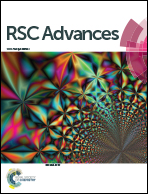Rashba spin–orbit coupling enhanced anomalous Hall effect in MnxSi1−x/SiO2/Si p–i–n junctions
Abstract
Rashba spin–orbit coupling, which allows the manipulation of electron spins in semiconductor heterostructures, has attracted great interest due to its potential applications in spintronic devices. But it is still not clear whether the Rashba spin–orbit coupling in a p–n junction can have a significant effect on the anomalous Hall effect of a p-type ferromagnetic semiconductor film grown on an n-type semiconductor substrate. Here MnxSi1−x/SiO2/Si p–i–n junctions were formed by sputtering p-type MnxSi1−x magnetic semiconductor films on near-intrinsic n-type Si substrates with about 1 nm SiO2 native oxide layer. Although Mn0.48Si0.52/SiO2/Si p–i–n junctions and Mn0.48Si0.52 magnetic semiconductor films grown on insulating glass substrates almost show the same positive anomalous Hall effect at low temperature below 150 K, Mn0.48Si0.52/SiO2/Si p–i–n junctions show a greatly enhanced negative anomalous Hall effect around the temperature of 200 K. On further analysis of the in-plane resistance of Mn0.48Si0.52 films and the I–V curves of the p–i–n junctions, the enhanced negative anomalous Hall effect is attributed to the interfacial Rashba spin–orbit coupling in Mn0.48Si0.52/SiO2/Si p–i–n junctions.


 Please wait while we load your content...
Please wait while we load your content...